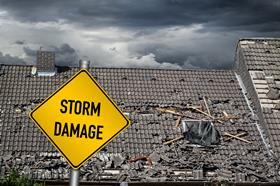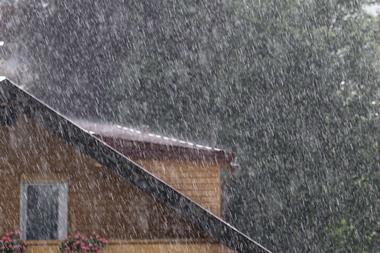’The combined impact of material cost inflation, material shortages and labour shortages means increasing costs,’ says head
Specialist loss adjuster Woodgate and Clark has warned insurers of a steep rise in scaffolding costs as Storm Henk batters parts of the UK.

The storm first struck on Tuesday (2 January 2024) and has continued to lash large parts of England and Wales with heavy rain and strong winds throughout the week.
This has resulted in flooding in several parts of the UK, while residential and commercial properties have been damaged.
With this likely to result in many people claiming for repairs, Woodgate and Clark has warned insurance providers and their claims partners that associated scaffolding costs rose 40% in the last year.
It highlighted that in one recent claim, the scaffolding cost was six times more than the cost of the repair on the property.
Nick Turner, head of surveying at Woodgate and Clark, highlighted that scaffolding firms were being impacted by increased fuel and material costs.
“The global imbalance in supply and demand for softwood lumber led to a 113% price increase in the UK in 2021, while steel prices surged due to inflationary pressures and rising electricity costs,” he added.
“The combined impact of material cost inflation, material shortages and labour shortages means increasing costs, difficulty in obtaining quotations and extended lead-in periods for the insurance sector and its customers.
“This is far from ideal at a time when insurance providers and their loss adjusting partners are working around the clock to repair damage.”
Repair
Storm Henk is one of many storms to have struck the UK recently, with the Met Office having put in place amber and yellow weather warnings in November 2023 as Storm Ciarán crossed the southern half of the UK.
Read: Heightened fraud risk in the wake of recent storms – McLarens
Read: Storm Babet a warning for UK insurers to focus on building resilience
Explore more property-related content here or discover other news stories here
And Storm Babet struck parts of eastern Scotland a month earlier, with a red weather warning issued due to heavy rain and strong winds.
According to Woodgate and Clark’s estimates, insurers expect to pay out an estimated £560m to help customers who suffer damage from such weather-related events.
Turner stressed that insurance providers needed to work with a repair network that had an intimate understanding of construction, repair methods and their costs.
He also highlighted a number of ways to mitigate scaffolding costs, such as erecting sections of scaffolding and working in sequence rather than erecting a complete scaffold.
“This reduces the amount of materials required and may enable a reduced lead-in period and potentially costs,” he said.
“There is also the possibility of using hydraulic lifts and similar plant if there is room. This is where the building expertise offered by our building repair network Quadrassist can prove so vital in helping insurance providers make these decisions.
“Fundamentally, however, we need to allow for higher access costs and accept that these will form a significant part of total repair costs over the next few years.”

His career began in 2019, when he joined a local north London newspaper after graduating from the University of Sheffield with a first-class honours degree in journalism.
He took up the position of deputy news editor at Insurance Times in March 2023, before being promoted to his current role in May 2024.View full Profile
Hosted by comedian and actor Tom Allen, 34 Gold, 23 Silver and 22 Bronze awards were handed out across an amazing 34 categories recognising brilliance and innovation right across the breadth of UK general insurance.























































No comments yet